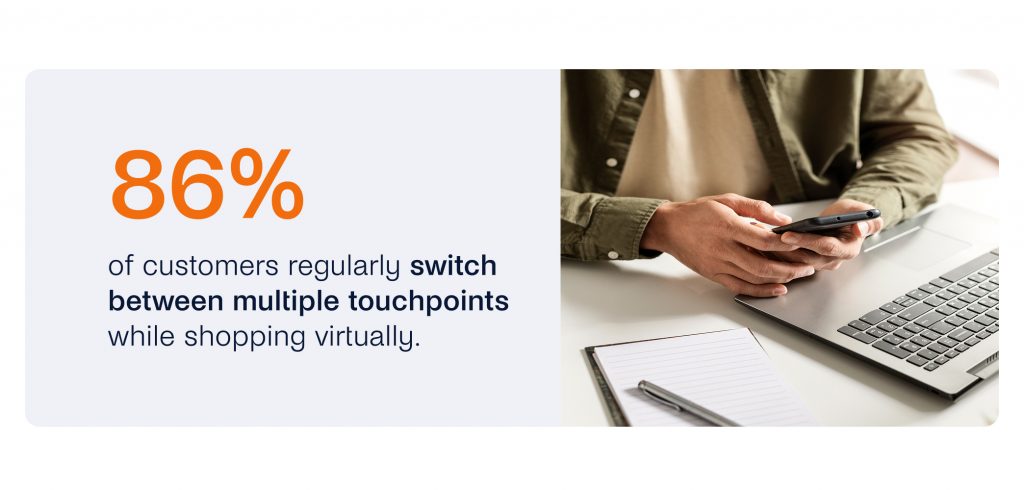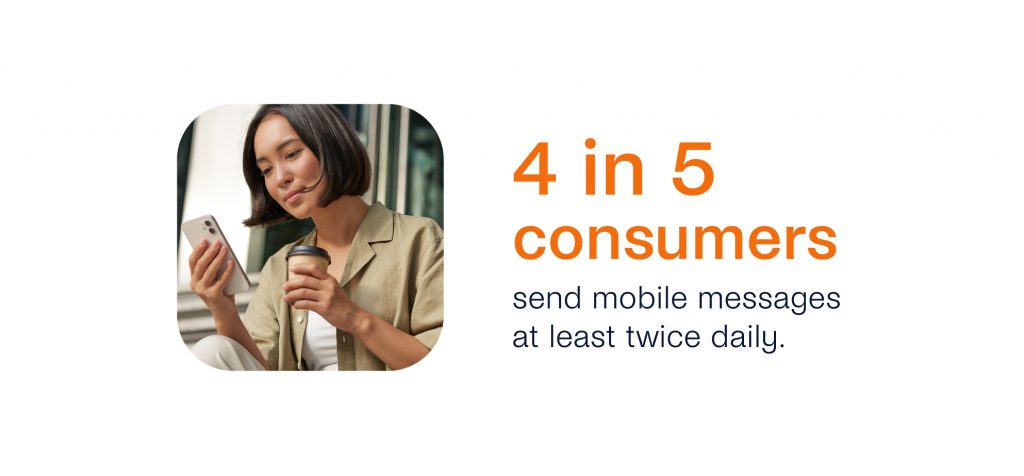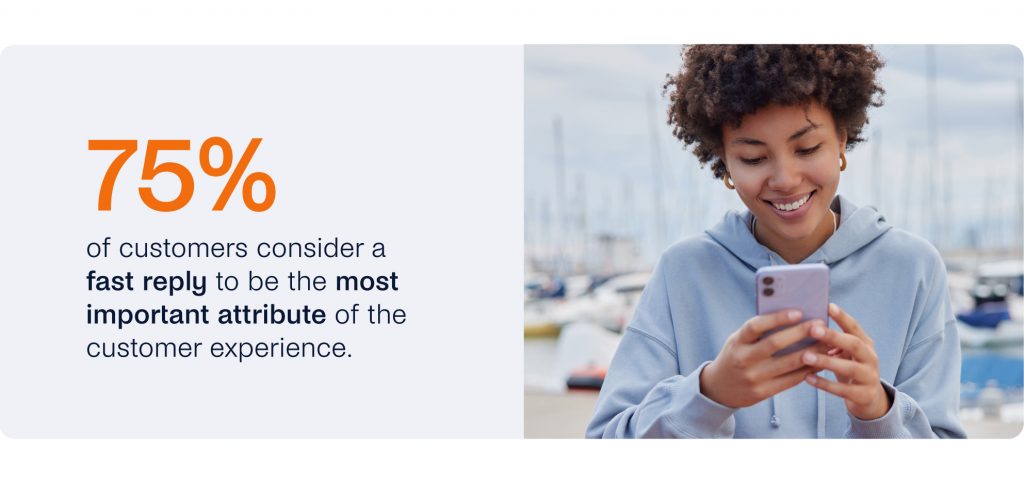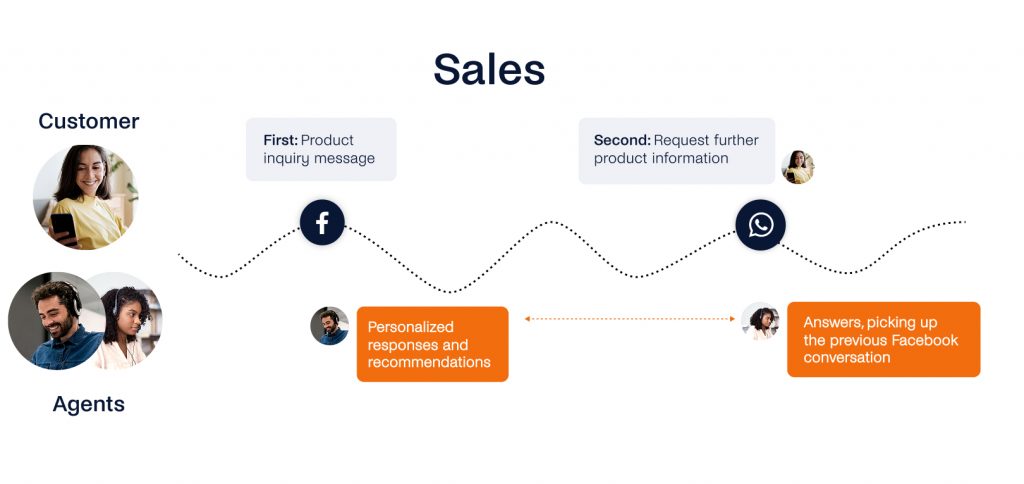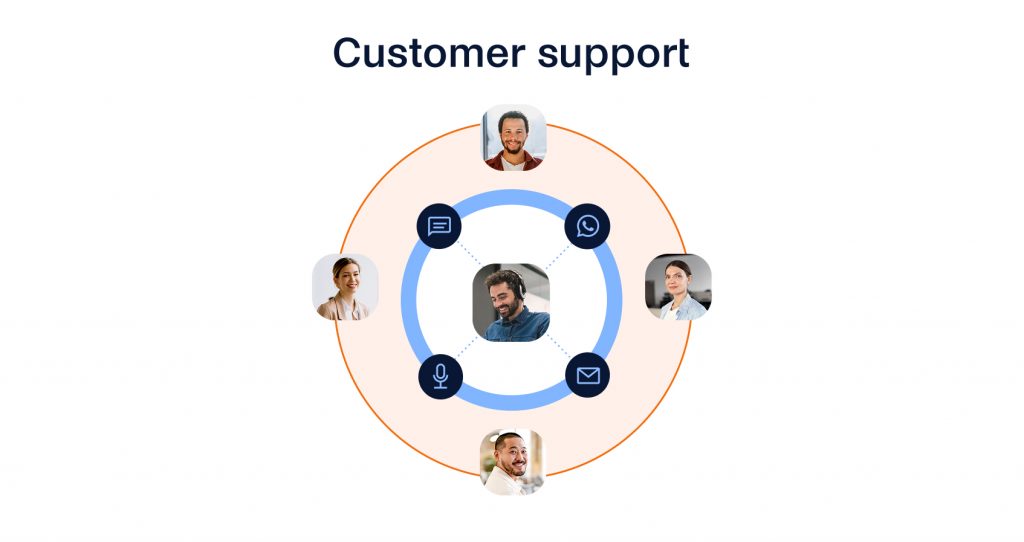How to leverage omnichannel messaging to enhance the customer journey
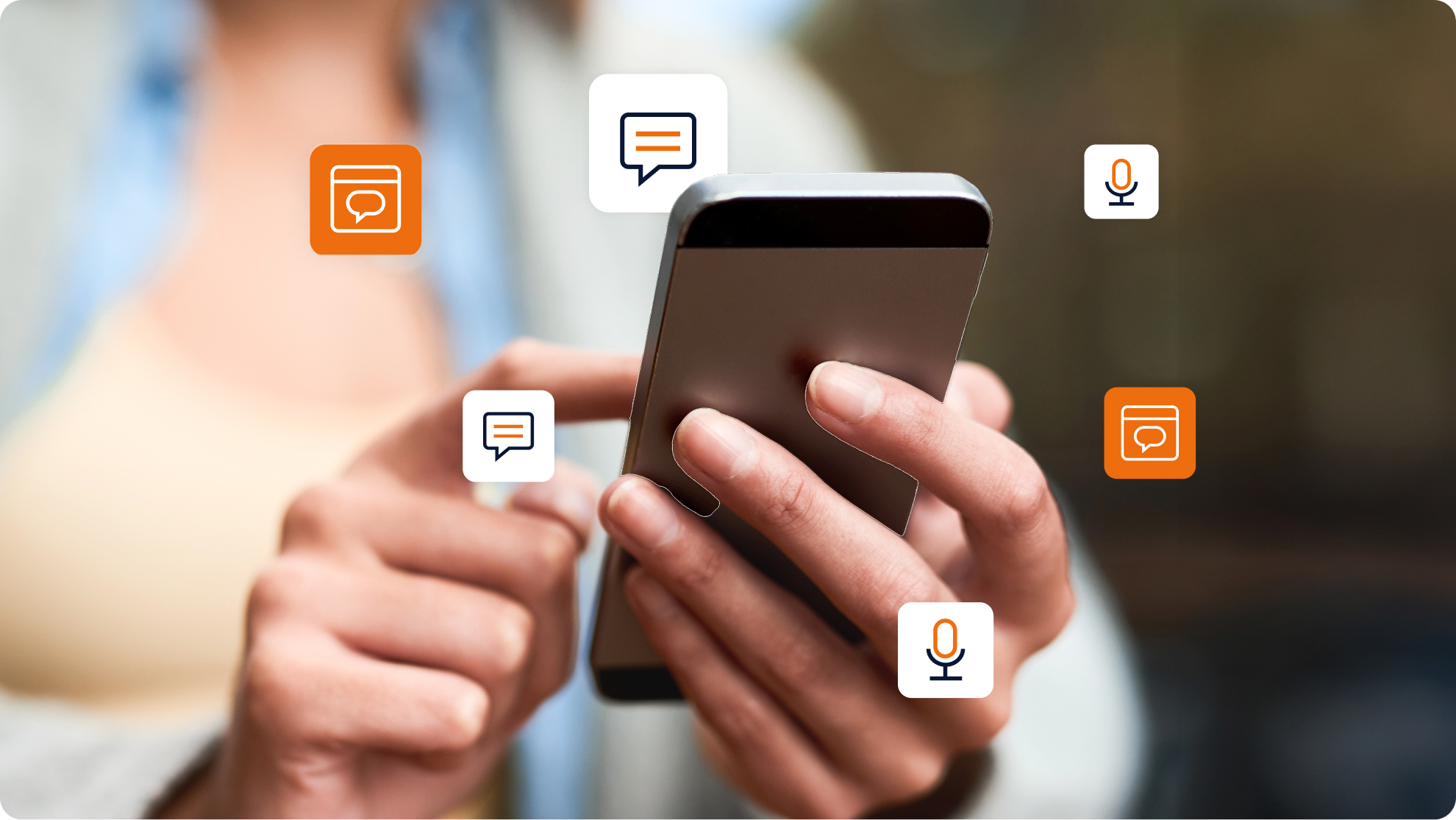
By leveraging omnichannel messaging, businesses can create more personalized experiences and ensure they reach customers wherever they are. Let’s deep dive now!
Let’s face it, we’re using digital communication to connect with each other every day. In fact, it has never been more widespread.
Globally, brands in every industry are leveraging the use of numerous channels to communicate with their customers on a deeper level. This upwards trend makes sense, considering that 86% of customers regularly switch between multiple touchpoints while shopping online. Customers also expect not only for a brand to be available 24/7, but also to communicate consistently at every touchpoint.
This is precisely why omnichannel messaging has become an ever-present buzzword. By going omnichannel, brands are connecting all their messaging dots. Brands communicate with their customers on the apps their customers love in a seamless and consistent way—no matter what point a customer is at in the customer journey.
Omnichannel messaging—what does it mean?
Ultimately, the goal of omnichannel messaging is to create a unified experience across all messaging channels a brand uses to ensure customers have a purely relevant and positive experience. Customers can start conversations where they want and when they need them.
How brands do this is simple. They integrate all of their digital messaging channels into one place—a messaging platform or inbox. This makes it easy to manage all customer conversations and respond to them appropriately, and with the speed today’s customer expects. Brands use either bots, human agents, or a mix of both.
A large bulk of incoming inquiries, up to 70%, can be automated. Human agents can therefore tend to some of the more complex inquiries and give customers higher quality care. To improve communication further, customer support is given access to the conversation history of each customer, no matter what channel they used to reach out to a brand. With the full context at their fingertips, agents are better equipped to respond to individual messages.
A major benefit of leveraging omnichannel messaging is the potential to continue customer conversation and connect with them more deeply. When harnessed correctly, brands can build stronger relationships with their customers and improve loyalty. It’s vital that brands provide truly meaningful and personalized experiences. And by going omnichannel, brands are better able to deliver the right message at the right time. This can be a deeply trust-building experience for customers—and in the long term can increase sales and boost CLV for brands.
Omnichannel vs multichannel marketing
The key difference between omnichannel and multichannel marketing is that omnichannel marketing is customer-centric, while multichannel marketing is product-focused.
- Omnichannel marketing is seamless—connecting all channels, platforms, and devices. Conversations are more meaningful and customers are better able to connect with the brand. Customers get consistent brand experiences that help to build trust and loyalty. Individual conversations can be accessed by all relevant, customer-facing teams—regardless at which touchpoint the communication occurred.
- Multichannel marketing on the other hand is when brands use only a customer’s preferred communication channel. This means that more than one channel is used to interact with a customer, but interactions are not linked with one another. Plus, channels are typically managed by separate teams—with customer support, sales, and other teams communicating with customers in a disjointed way.
With an omnichannel messaging platform like tyntec’s Conversations Inbox, brands can add the channels they need like WhatsApp, SMS, Viber Business, Facebook Messenger, Twitter DM, their own webchat, and many more. Messaging platforms make communication effortless and smooth—conversations have context and customers no longer have to repeat themselves. Brands delight their customers and facilitate conversations that are memorable. In the end, it’s a win-win for both the customer and the brand.
Why omnichannel messaging matters
The use of mobile devices and messaging apps continues to rise.
Here are a few stats for you:
The vast majority of smartphone users check their mobile devices within the first hour of waking up. 4 in 5 customers send mobile messages at least twice daily. Smartphone users tend to spend 89% of their time on their devices using apps, while only 11% is spent on websites. Unsurprisingly, mobile devices account for 46% of all worldwide e-commerce sales.
The rise in use of mobile devices and messaging apps has changed the way customers want to engage with brands. To keep up with this major shift, brands need to change as well. Customers want to be able to reach you through whatever messaging app they’re using. Here are a few more benefits of adopting an omnichannel messaging strategy.
1. Elevated customer experiences
Customer experiences are improved through communication that is easy, efficient, and seamless. Customers interact with you on their preferred channel whenever they need to and at whatever time suits them best. They can switch to different apps flawlessly, without the annoyances like having to repeat themselves over and over again.
Why is enhancing the customer experience important?
Because 80% of customers believe their experience with a brand is as important as the products and services it provides. Plus, customers are willing to pay more if it means they also get an outstanding experience in exchange.
As a result, you’ll have happier customers who are more likely to make repeat purchases—thereby increasing customer retention and brand loyalty rates.
Applying an omnichannel messaging strategy to your brands is powerful. It can help you retain approximately 89% of your customers. Those who don’t effectively use omnichannel messaging are estimated to have a customer retention rate of 33%.
2. Effortless convenience
Messaging apps allow for uncomplicated and convenient communication. Given that these apps are just a few taps away on a a customer’s mobile device, starting conversations could not be easier.
Customers can initiate a conversation whenever and wherever they are—and get answers immediately. They don’t have to be on hold or repeat themselves. Instead, they get the answers they’re looking for in a format that they’re already using to communicate with their family and friends with.
How does omnichannel messaging help to create a more personalized experience?
Messaging apps allow you to have direct, one-on-one conversations with your customers. To them, it feels similar to interactions they have with loved ones on the same channel—it’s familiar and personal.
From the brand’s side, customer support agents are given access to all customer data and previous conversations. Agents have context and are thereby better understand how to support the customer. This deeper knowledge into a customer’s specific background and situation also allows the agent to create more personalized messages.
3. Swift customer service
Through omnichannel messaging, brands can improve their average response times—providing immediate customer service. Fast response times matter to today’s customer, as 75% of customers believe the most important component of customer service is quick responses.
And get this—78% of customers buy from brands that respond to their inquiry first!
Ultimately, the volume of inquiries is distributed across multiple communication channels. This allows brands to have overall faster response times by preventing individual channels from being flooded with customer conversations.
4. Maximum efficiency
Conversations are streamlined through an omnichannel strategy and agents handle all customer interactions in one place. Agents can support customers better because they have access to previous customer interactions as they communicate with customers in real-time.
Answers to common questions can be automated, giving customer agents more time to address more complex inquiries. Customer support teams can thereby increase their overall productivity and are able to handle multiple inquiries at once.
Revenue increases, while customer satisfaction improves through the newly achieved operational efficiency.
5. Easy personalization
Today’s customer highly values personalized messages—and going omnichannel makes it simple and easy to achieve this.
In fact, 66% of customers expect you to interact with them according to their unique needs and expectations, while 64% of customers want personalized experiences based on their past interactions with your brand.
6. Simply automatic: AI-powered tools
To deliver personalized and conistsent messaging experiences across the board, brands are relying increasingly on AI to get the job done. Using AI-tools, brands can create personalized messages that are tailored to individuals customer preferences and needs.
AI can be used to automate processes such as managing campaigns or segmenting customers. Brands can thereby create a seamless experience at every touchpoint—allowing customers to easily start conversations and quickly get their questions answered.
Omnichannel messaging use cases
Going omnichannel clearly has it’s advantages for both the brand and the customer—but what does it look like in everyday business settings?
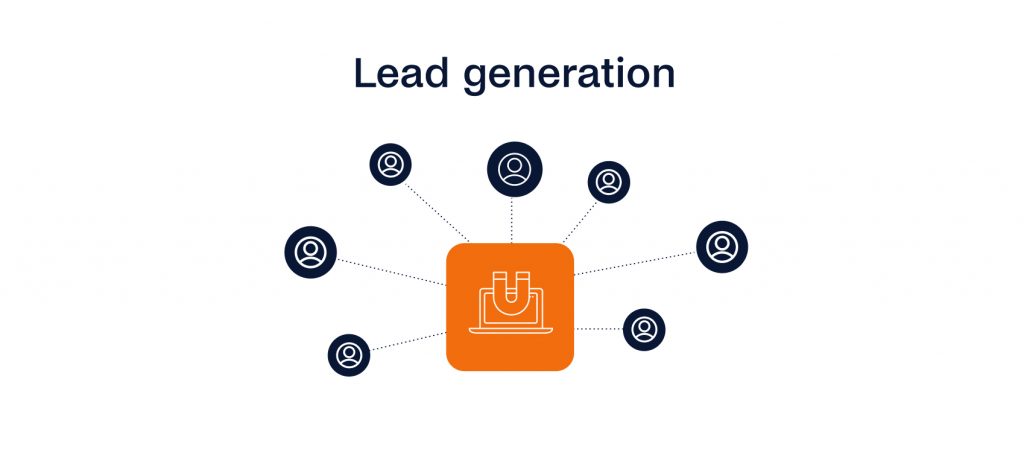
It’s no secret that the end goal of lead generation is to transform customer interest in a product into a sale or conversion. But how does the process connect to omnichannel messaging?
Omnichannel messaging is a holistic approach that takes the customer’s entire journey into account—from awareness to purchase. Brands can meet the customer where they are and send the right message, at the right time.
Through omnichannel messaging, brands can send special offers and discounts to leads. This tends to work well since 59% of customers believe that unexpected offers or giveaways are a great way to capture their interest.
Ultimately, brands create a consistent brand identity and seamless customer experience that delights customers—leading to more conversions.
Omnichannel messaging removes any friction that existed between channels—which is ideal for sales.
Sales agents can lead a customer through the entire sales process through the use of streamlined communication and shared customer data. Customer’s move through the process on their own terms and using the channel they prefer.
Here’s what omnichannel messaging could look like in sales:
Say a customer just sent you an inquiry through you a Instragram DM. You read the message, while also reviewing any previous history with the customer—regarless of what individual or team they may have communicated with in the past. The information you have access to gives you context and helps you to put together a personalized reply, along with recommendations the customer may enjoy.
The next day, the customer decides that they need more information after considering your recommendations. But they’ve decided to reach out to you on WhatsApp instead. You, or whoever is in the office that day, can answer their inquiry immediately and seamlessly—the conversation form the previous day guiding their next move. The customer is delighted by the personalized reply and decides to make a purchase right through WhatsApp after the agent sends them a direct link.
Omnichannel messaging makes the whole sales process super efficient and unified for both the sales agent and customer.
Omnichannel messaging is especially important for improving customer support. Whenever a customer needs to solve a problem, a brand can support them immediately—on a channel a customer considers most convenient.
Customers don’t have to make call, but put on hold, or explain their situation more than once. Removing the issues that arise in traditional customer support greatly improves satisfaction levels and leaves customers happy. And what brand doesn’t want that?
So there you have it…
Going omnichannel is essential for any brand that wants to provide outstanding, efficient, and personalized experiences across any messaging channel. Brands thereby can maximize lead generation and sales, and improve customer support.
Finding the right parter can be difficult, but you’ve landed in the right place! With our Conversations Inbox, your brand will be empowered to create an omnichannel experience that leads to more personalized and profitable interactions with every customer.
Boost efficiency by improving response times and agent productivity. The Conversations Inbox has a simple interface that your agents can use to support multiple customers simultaneously. They can share engaging content, like images, videos, and PDFs. Your agents can expand their conversations with order confirmations, video tutorials, and so much more.
Unlock your messaging potential and connect with your customers on a deeper level!

